Today is day #21 of the 2012 30 Days Of Biking challenge, and for this edition, rather than trying to find one image that summarizes the day, I’ll bring you along on a long meandering type ride I call a “ramble”.
This ride ended up being 74 miles, starting at my home in rural Johnson County, Kansas, and heading south into Miami County, on a mixture of paved roads, gravel roads, and minimum-maintenance roads.
Here are some highlights, in the order in which they occured:
The route started off on smooth asphalt.
Three miles in, the route turned to gravel. Reasonably smooth rolling at this point.
This old barn is starting to collapse.
This one-room country schoolhouse has now been turned into a cattle shed.
A stone house is now home to trees.
This farm was settled in 1876! Has it been in the same family all that time?
It’s rare to meet other cyclist on a gravel road ramble!
This sign always makes me giggle. “Oh no, there are curves in the road. Whatever shall we do?” (It seems like 99% of Kansas roads are dead straight, so any variation is cause for alarm.)
I’ve always wondered what one has to do to rate a private bridge of this magnificence?
A pleasant little stream.
The route took me onto K-68 Highway for a mile or two. The paved shoulder varies from about 1-3 feet in width, alongside 65 MPH traffic. It’s not my favorite section of the route…
But K-68 leads to Louisburg Cider Mill, which is definitely worth stopping for. This is a cider donut and a small cup of cold cider. Mmmm!
An old silo, with vines along the north side.
Somerset Ridge Vineyard & Winery offers award-winning Kansas wines, and taste-tests are free. I didn’t partake this time, but it’s a fun place to stop for a sample!
Tiny baby fish schooling in a roadside creek.
The famous “bicycle fence” at 311th and Beaver Creek Road. A Schwinn, a Magna, a Columbia, a Sears & Robuck, and a couple Huffy’s and AMF Roadmasters.
Highland RWD #2 water tower.
This was the site of the Highland Zion Evangelical Church, founded in 1880, and lost to fire in 1963. Only the front steps remain from the structure, with a small country cemetery behind.
An old one-room country schoolhouse, apparently still used for something…
The beginning of two miles of minimum maintenance road. It starts off as mostly dirt, and turns rocky as it drops into a creek valley.
Taking a break along the minimum maintenance road. With no traffic, it’s tempting to just lie in the shade and take a little nap…
A low-water crossing on the minimum maintenance road. A nice scene, but not the most attractive water.
The Paola Terminal for Conoco-Phillips. There are eight huge storage structures (containing petroleum, I assume).
Bike bans suck. This one, in Osawatomie, only applies to this one little stretch of road, on the overpass that goes over the railroad tracks. Dumb.
The Creamery Bridge in Osawatomie is a Marsh Arch triple span bridge built in 1930 over the Marais des Cygnes River. It is listed on the National Register of Historic Places.
This waterfall is just above the Creamery Bridge on the Marais des Cygnes River. The white dots visible in the photo are Cottonwood seeds gently falling and blowing in the breeze.
John Brown Lookout Park near Paola. This was used as an observation point to watch for troops during the Civil War and “Bloody Kansas” periods.
The road leading up to the top is a tough one. I ran out of gears, the back wheel started to slip in the gravel, and I had to walk it.
There is a Geodetic Survey Marker at the top of John Brown Lookout.
There’s nearly a 360° view from atop the hill. The white dots in the distance are grain silos and water towers in Paola.
This bust of Baptiste and Mary Ann Peoria is located on the town square in downtown Paola. They were the founders of Paola. The marker “celebrates over 150 years of racial diversity and cooperation”.
This is me at the Miami County Courthouse in Paola. It was one of a number of Kansas courthouses designed by famed architect George P. Washburn, and was built in 1898.
A brief timeline of Miami County history.
This is fresh gravel. Eventually, smooth paths get worn in the road from car and truck traffic. Until then, the loose, chunky rocks make for difficult passage for bicycles.
A railroad underpass near Spring Hill, built in 1922. There’s always interesting (and frequently obscene and hateful) graffiti here.
The wheat is still green, but heading out. With all the warm winter and spring weather, it’s going to be an early crop.
I ended up at right at 74 miles, with an overall average of about 13 MPH. Approximately 40 miles of the route was unpaved.
I hope you enjoyed this little travelogue. This is my favorite type of ride — easy pace, lots of stops to check out interesting views, nature, or historic places. There are so many interesting things to see if you just take the time to look!
Post tags: 30 Days Of Biking 2012
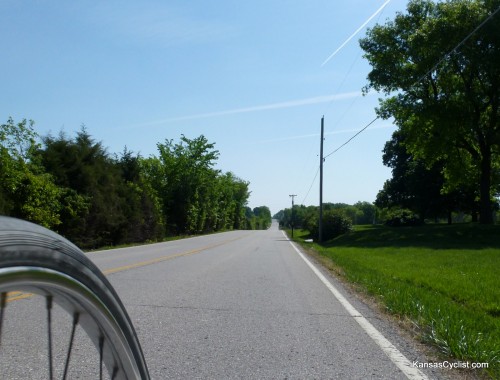
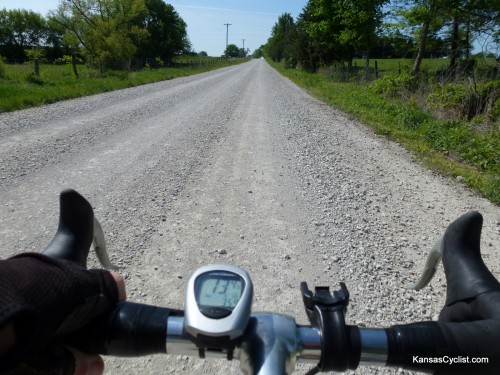
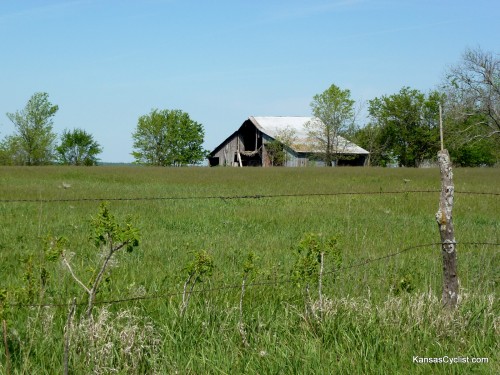
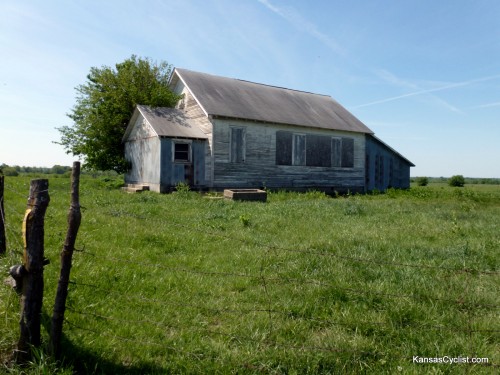
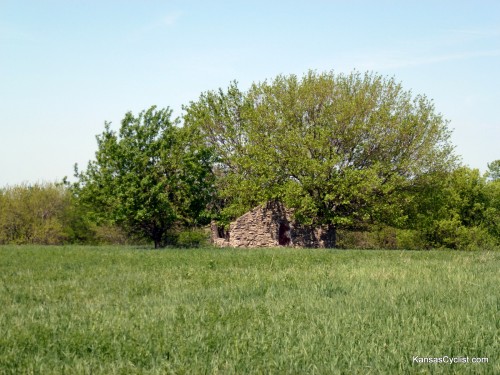
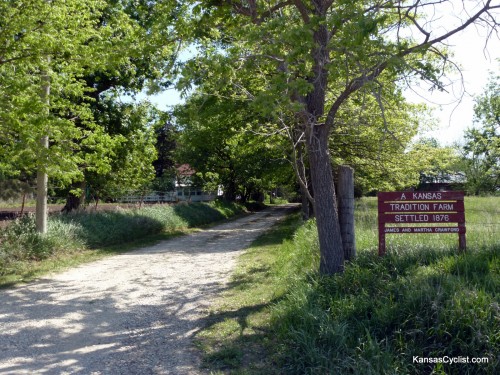
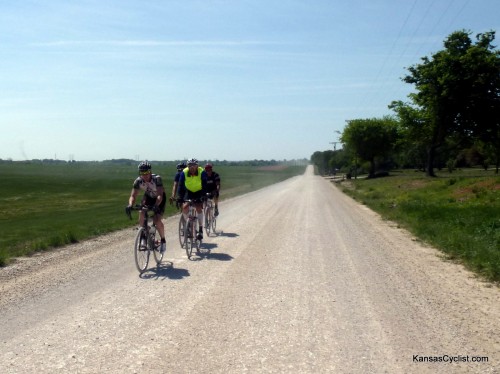
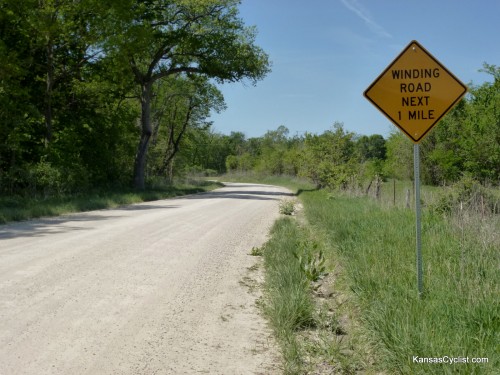
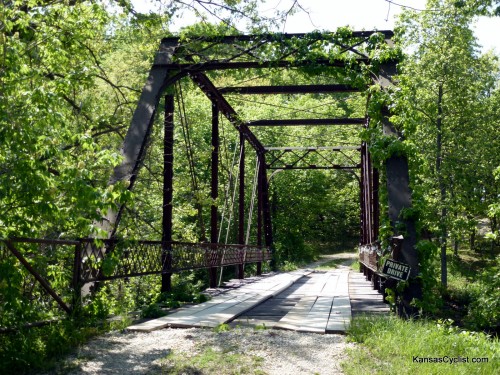
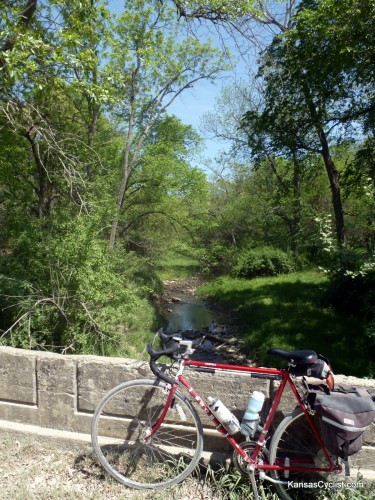
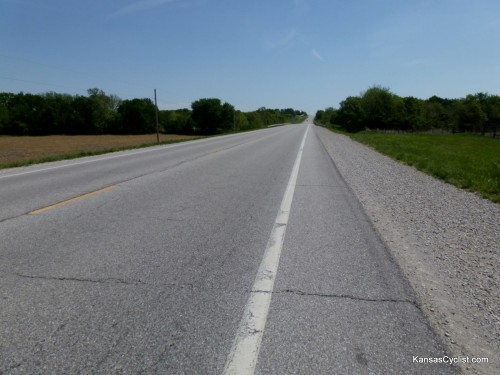
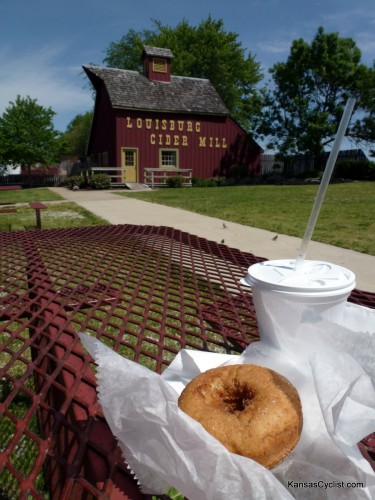
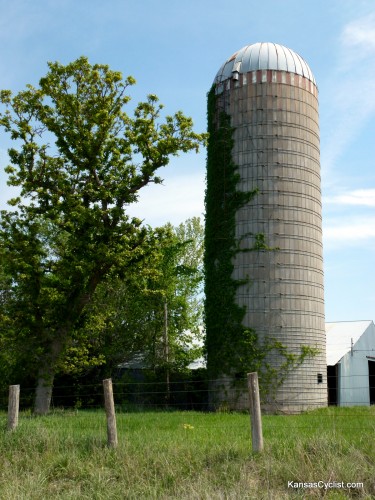
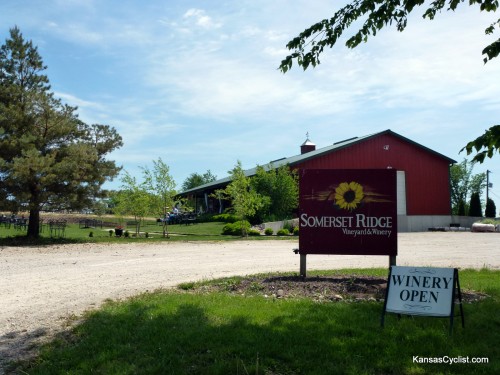
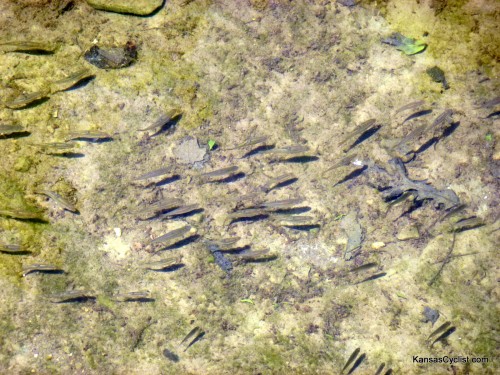
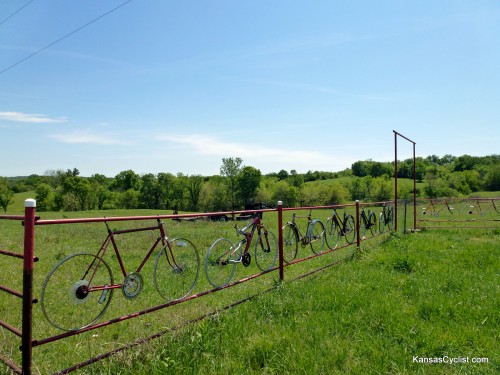
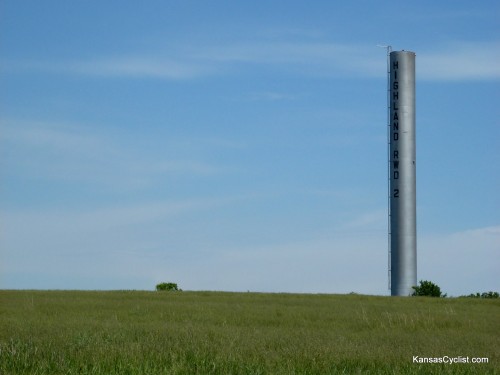
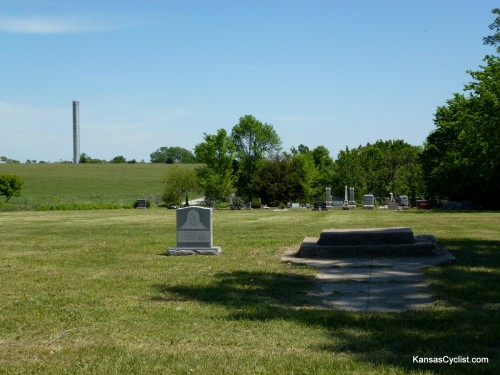
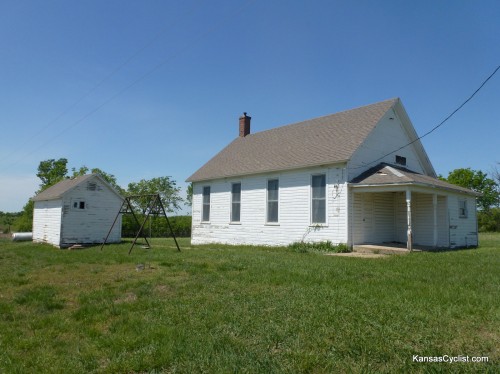
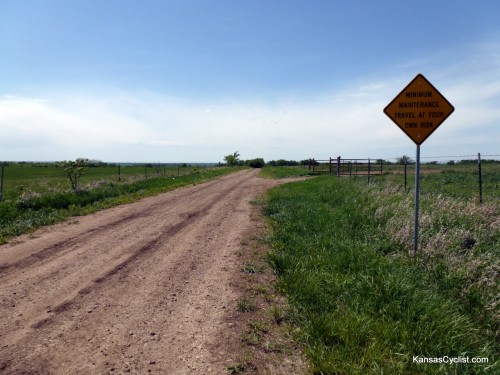
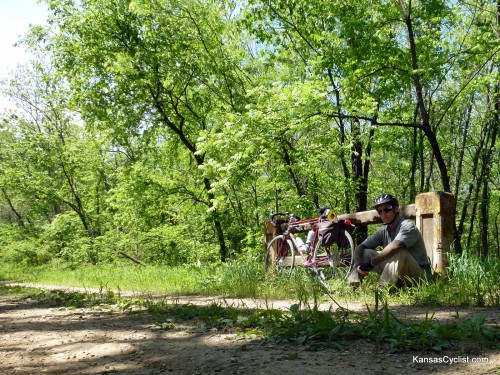
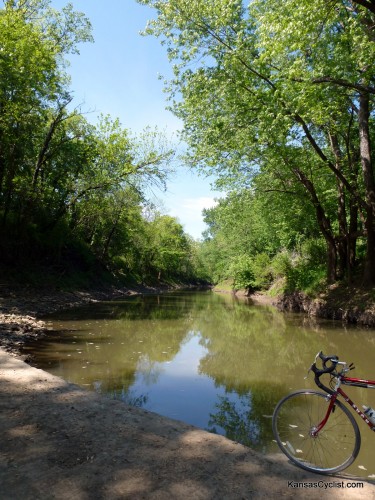
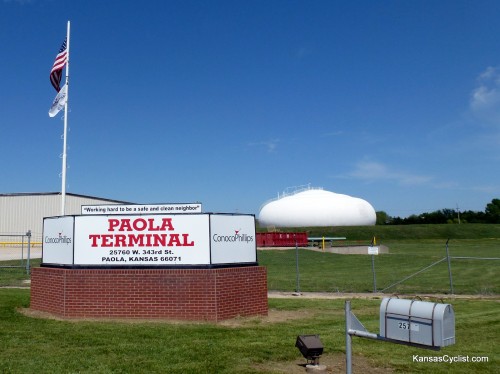
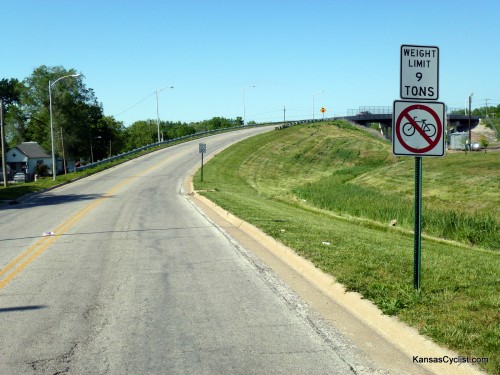
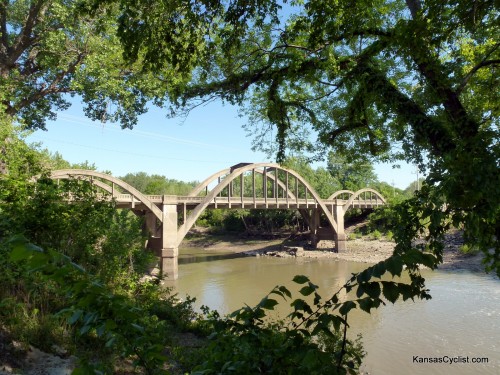
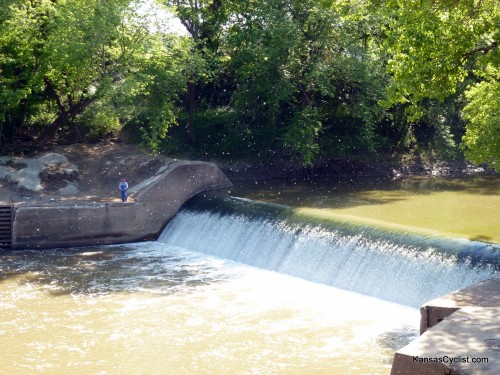
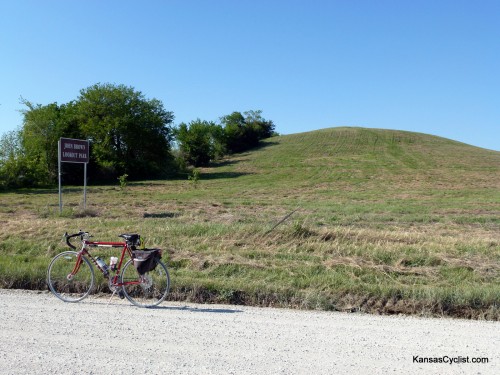
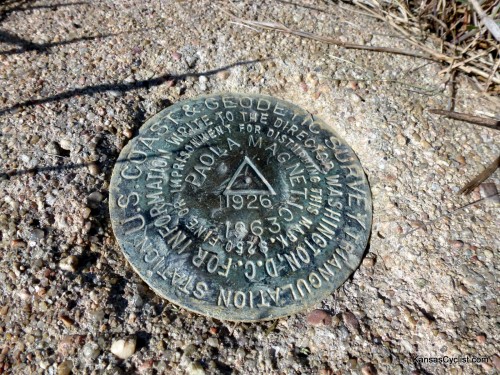
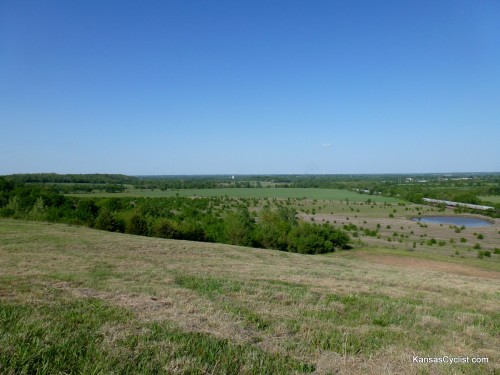
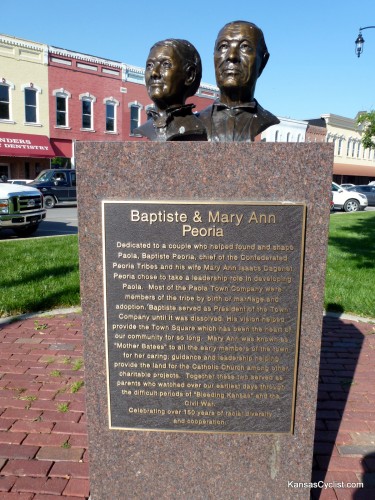
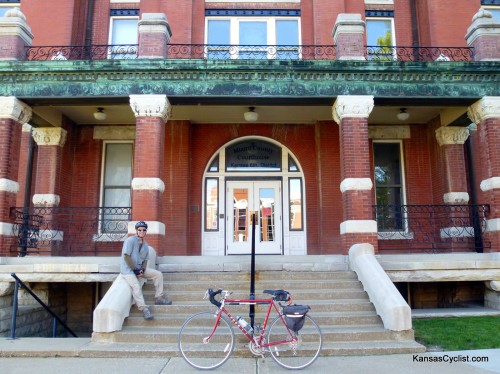
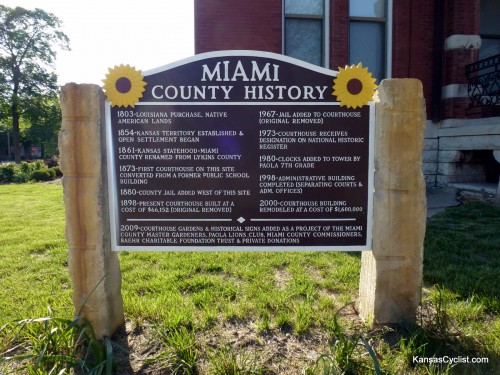
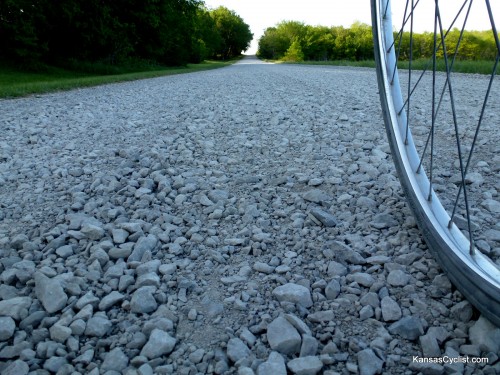
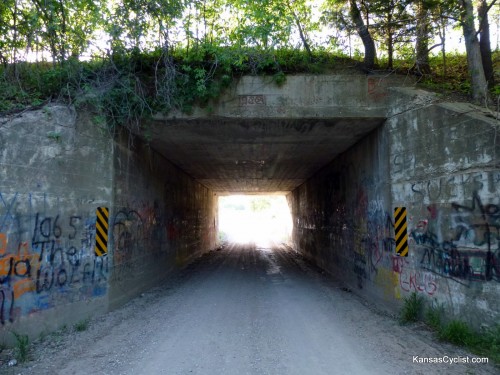
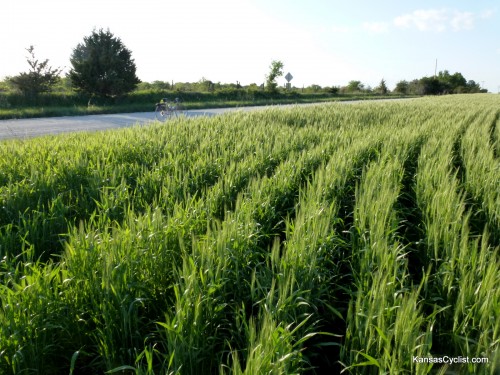


I added that weight limit and bike ban to OpenStreetMap (which also feeds OpenCycleMap)
Thanks, Paul. I don’t know if it’s the “world’s dumbest bike ban”, but it’s pretty silly. I’ve been meaning to write about this for awhile. I’d hoped that they’d come to their senses on their own, but I see no signs of that happening, so I’ll write up a longer post on it here pretty soon.